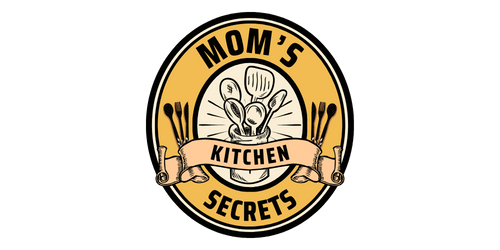Are you a beginner when it comes to meal planning and grocery shopping? Look no further, because this article is here to guide you through the process! Whether you’re trying to save money, eat healthier, or simply become more organized, meal planning and grocery shopping can be the key to achieving your goals. In this beginner’s guide, we will cover the basics of meal planning, provide helpful tips for creating a shopping list, and offer advice on navigating the aisles of the grocery store. So grab a pen and paper, and let’s get started on your journey to stress-free meal planning and efficient grocery shopping!

Benefits of Meal Planning
Meal planning has numerous benefits that can make your life easier and more efficient. Here are a few of the top advantages of incorporating meal planning into your routine:
Save time and money
One of the biggest advantages of meal planning is the amount of time and money it can save you. By planning your meals in advance, you avoid the last-minute scramble to figure out what to cook for dinner. This means less time spent standing in front of the pantry or fridge, trying to decide what to make. Additionally, meal planning allows you to create a shopping list based on the ingredients needed for the week, reducing the number of trips to the grocery store and avoiding impulse purchases.
Reduce food waste
Another great benefit of meal planning is that it can help reduce food waste. When you plan your meals in advance, you have a clear idea of the ingredients you need and can use. This means you’re less likely to buy excess food that ends up going to waste. Additionally, with a meal plan in place, you can utilize leftovers effectively, ensuring that no food goes to waste.
Eat healthier
Meal planning is a fantastic tool for promoting healthier eating habits. When you plan your meals in advance, you have the opportunity to incorporate a variety of nutritious and balanced options into your diet. By choosing recipes that include a mix of lean proteins, whole grains, fruits, and vegetables, you can ensure that you’re getting all the essential nutrients your body needs. With a well-rounded meal plan, you’re less likely to opt for unhealthy fast food or convenience options.
Simplify cooking process
Lastly, meal planning makes the cooking process much simpler and more enjoyable. With a clear plan in place, you know exactly what you need to do each day and can prepare ingredients in advance. This allows for more efficient cooking, as you can focus on the task at hand without constantly wondering what to make. Additionally, meal planning can help expand your culinary skills as you try out new recipes and experiment with different flavors.
Getting Started with Meal Planning
To get started with meal planning, there are a few key steps you’ll need to follow. By following this process, you’ll be on your way to creating a successful meal plan that works for you and your lifestyle.
Set your goals
The first step in meal planning is to determine what you hope to achieve by implementing this practice. Are you looking to eat healthier, save time, or reduce food waste? Understanding your goals will help you tailor your meal plan to meet your specific needs.
Choose your meal planning method
There are various methods you can use for meal planning, so it’s important to find one that suits your preferences. Some people prefer to plan a week’s worth of meals at once, while others opt for a two-week or monthly plan. You can use physical planners, meal planning apps, or even a simple spreadsheet to keep track of your meals.
Consider your schedule and lifestyle
When creating your meal plan, it’s crucial to take your schedule and lifestyle into account. If you have a busy week ahead, you may need quick and easy recipes that require minimal preparation. If you have dietary restrictions or preferences, ensure that your meals align with those needs.
Check your pantry and fridge
Before creating your meal plan, take an inventory of your pantry and fridge to see what ingredients you already have on hand. This will help you avoid buying unnecessary items and make use of what you already have. It can also serve as a source of inspiration for meal ideas.
Create a meal plan template
Having a meal plan template can make the planning process easier and more organized. It can be as simple as a grid or table where you can fill in your meals for each day of the week. Consider including space for breakfast, lunch, dinner, and snacks. Additionally, leave some flexibility for adjustments if needed.
Creating a Meal Plan
Now that you have the foundation for meal planning, it’s time to dive into creating your actual meal plan. Here are some key steps to consider:
Decide on the number of meals
Firstly, determine how many meals you want to plan for each day. If you typically have three main meals and a few snacks, consider that when deciding on recipes and portion sizes.
Choose a variety of recipes
To keep things interesting and ensure you’re getting a balanced diet, choose a variety of recipes for your meal plan. Consider incorporating different cuisines, flavors, and cooking methods. This will help prevent taste fatigue and make mealtime more enjoyable.
Consider dietary restrictions and preferences
When selecting recipes, take into account any dietary restrictions or preferences. Whether you’re vegetarian, gluten-free, or have specific food allergies, plan meals that align with your needs. There are countless recipe resources available that cater to various dietary requirements.
Balance nutrients in each meal
Each meal should aim to be nutritionally balanced, containing a mix of protein, carbohydrates, and healthy fats. Include a source of lean protein, such as chicken, fish, or tofu, along with whole grains or starchy vegetables and plenty of fruits and vegetables.
Plan for leftovers and make-ahead meals
Consider including meals in your plan that can easily be made in larger quantities, resulting in leftovers for future meals. Additionally, identify recipes that can be prepped in advance, such as chopping vegetables or marinating proteins. This will save you time and make the cooking process more efficient.
Building a Grocery List
Once your meal plan is complete, it’s time to create your grocery list. By following these steps, you can ensure that you have all the necessary ingredients on hand for your meals:
Review your meal plan
Take a close look at your meal plan and note down all the ingredients required for each recipe. Double-check for any items that may have been missed during the initial planning process.
Check your pantry and fridge
Refer back to your pantry and fridge inventory and cross off any ingredients that you already have. This will prevent you from buying duplicates and save you money.
Categorize your grocery list
To make your shopping trip more efficient, categorize your grocery list by sections of the store. Group items together, such as produce, dairy, meat, and pantry staples. This will help you navigate the store more easily and ensure you don’t miss anything.
Prioritize seasonal and sale items
When selecting produce, prioritize seasonal options as they tend to be fresher and more affordable. Keep an eye out for any sales or discounts on items that are part of your meal plan. This can help save you money and allow for more variety in your meals.
Consider bulk buying
For pantry staples that you frequently use, consider buying in bulk. This can often be more cost-effective and will ensure you always have these items on hand when you need them.

Navigating the Grocery Store
Now that you have your grocery list ready, it’s time to tackle the grocery store. Use these tips to help make your shopping experience successful:
Stick to your grocery list
One of the most important rules when grocery shopping is to stick to your list. Avoid impulse purchases and unnecessary items that aren’t part of your meal plan. This will help you stay within budget and prevent food waste.
Shop the perimeter first
Start your shopping trip by navigating the perimeter of the store. This is where you’ll find fresh produce, dairy, meat, and other whole foods. The interior aisles tend to house processed and packaged foods, so focusing on the perimeter will ensure you’re prioritizing healthier options.
Compare prices and read labels
When selecting items, compare prices between brands and sizes. Be sure to read labels to check for any added sugars, sodium, or artificial ingredients. Opt for products with fewer additives and more natural ingredients whenever possible.
Avoid processed foods
While it’s not always possible to avoid processed foods entirely, aim to minimize them in your shopping cart. Processed foods tend to be high in added sugars, unhealthy fats, and artificial ingredients. Choose whole, minimally processed options whenever possible.
Buy in bulk or family-sized packs
For non-perishable items, consider buying in bulk or opting for family-sized packs. This can help save you money in the long run, especially for items that you use frequently.
Smart Shopping Tips
Alongside the strategies for navigating the grocery store, there are some additional tips to keep in mind to help you shop smarter:
Shop with a full stomach
One of the best tips for avoiding unnecessary purchases is to shop on a full stomach. When you’re hungry, you’re more likely to give in to cravings and make impulse purchases. Grabbing a snack or meal before heading to the store can help you make more mindful choices.
Stick to a budget
Set a budget for your grocery shopping and do your best to stick to it. Having a predetermined limit can help prevent overspending and encourage you to prioritize essential items.
Look for coupons and discounts
Before heading to the store, check for any coupons or discounts that may be available. Many grocery stores offer weekly or digital coupons that can help you save money on specific items. Take advantage of these savings opportunities whenever possible.
Consider store brands
While name-brand products may seem more appealing, don’t discount the quality and value of store brands. Many store brands offer comparable or even identical products at a lower price. Give store brands a try and see if they meet your needs and preferences.
Buy frozen or canned produce
When fresh produce is not in season or readily available, opt for frozen or canned options. These can be just as nutritious and are often more affordable. Plus, they have a longer shelf life, making them a convenient choice for meal planning.

Storing and Prepping Groceries
Once you’ve completed your grocery shopping, it’s essential to properly store and prep your groceries to maintain their freshness and maximize their usability:
Organize your pantry and fridge
Take the time to organize your pantry and fridge to make meal preparation easier. Keep similar items together and ensure that older products are brought to the front for use before newer ones. This will help prevent food from expiring or going to waste.
Properly store produce
Different types of produce have different storage requirements. Some fruits and vegetables are best stored in the refrigerator, while others are better left at room temperature. Do some research to understand how to properly store each item to maintain their freshness and quality.
Prep ingredients in advance
To save time during the week, consider prepping some ingredients in advance. This could include washing and chopping vegetables, marinating proteins, or pre-cooking grains. Prepping in advance will streamline the cooking process and make meals come together more quickly.
Label and date perishable items
When storing perishable items, such as leftovers, be sure to label them with the date they were stored. This will help you keep track of the item’s freshness and ensure you use it before it spoils.
Practice food safety
Food safety is crucial when storing and prepping groceries. Always wash your hands before handling food, keep raw meats separate from other items to prevent cross-contamination, and ensure that cooked foods are stored at the correct temperature to avoid spoilage.
Managing Leftovers
Leftovers are inevitable when practicing meal planning, but that doesn’t mean they have to go to waste. Here are some tips for effectively managing leftovers:
Plan for leftovers in your meal plan
When creating your meal plan, intentionally include meals that can result in leftovers. This allows you to utilize them for future meals, saving you time and money.
Reuse leftovers creatively
Get creative with your leftover meals to avoid monotony. Transform a roasted chicken into a flavorful soup or use leftover vegetables in a stir-fry. Repurposing leftovers can breathe new life into previous meals and make them exciting all over again.
Store leftovers properly
Proper storage is essential for maintaining the quality and safety of leftovers. Use airtight containers to store leftovers in the fridge or freezer. Label them with the date and contents for easy identification.
Monitor expiration dates
Keep an eye on the expiration dates of your leftovers and use them within a safe timeframe. If something looks or smells off, it’s best to err on the side of caution and discard it.
Repurpose ingredients
If you find yourself with leftover ingredients rather than complete meals, find ways to repurpose them in other dishes. Leftover cooked chicken can be shredded for a salad or wrap, while extra vegetables can be added to omelets or grain bowls.

Evolving Your Meal Planning Skills
As you become more comfortable with meal planning, you can start to evolve your skills and techniques. Here are some tips for taking your meal planning to the next level:
Experiment with new recipes
Don’t be afraid to step out of your comfort zone and try new recipes and flavors. Expand your culinary horizons by experimenting with different cuisines and ingredients. This will keep your meal plan exciting and prevent boredom.
Track your favorite meals
Keep a record of your favorite meals and recipes. This way, you can refer back to them when you’re in need of inspiration or want to recreate a favorite dish. Consider creating a digital or physical recipe binder to store your go-to recipes.
Adapt the meal plan to your changing needs
Remember that your meal plan is not set in stone and can be adjusted as needed. Your needs and preferences may change over time, so allow flexibility in your plan to accommodate those changes. Stay in tune with your body and make adjustments accordingly.
Meal prep for the week ahead
If you find yourself pressed for time during weekdays, consider batch cooking and meal prepping on weekends. This involves preparing larger quantities of meals or components that can be quickly assembled during the week. This will further simplify your cooking process and save you valuable time and energy.
Involve family members in meal planning
Meal planning doesn’t have to be a solo endeavor. Involve your family members in the process by asking for their input on meals or assigning them specific tasks such as grocery shopping or meal prep. This can promote teamwork and ensure that everyone’s preferences and needs are taken into account.
Troubleshooting Common Challenges
While meal planning can be incredibly beneficial, it’s not without its challenges. Here are some common challenges that you may encounter along the way, along with some tips for troubleshooting them:
Lack of inspiration
If you find yourself lacking inspiration for new meals, turn to reliable sources such as cookbooks, food blogs, or even social media platforms like Pinterest. These platforms offer countless recipes and meal ideas that can help reignite your creativity.
Not sticking to the plan
Life happens, and sometimes it’s not possible to stick to your meal plan. If you find yourself deviating from your plan frequently, consider making adjustments. Allow for more flexibility or try planning fewer meals to accommodate unexpected changes in your schedule.
Running out of ingredients
Running out of essential ingredients can throw a wrench into your meal planning. To prevent this, regularly review your pantry and grocery list to ensure you always have the necessary items on hand. Consider incorporating pantry staples that have a longer shelf life into your meal plan to avoid frequent trips to the store.
Difficulty estimating portions
Estimating portions can be challenging, especially when cooking for different people or trying to account for leftovers. Take note of portion sizes in recipes, and consider using measuring cups or a food scale to ensure accuracy. Over time, you’ll develop a better understanding of portion sizes and what works best for you and your family.
Meal planning for picky eaters
Meal planning can be particularly challenging when dealing with picky eaters. Try to involve them in the decision-making process by allowing them to choose certain meals or ingredients. Look for ways to make meals more customizable, such as offering a variety of toppings or sauces that can be added or omitted according to individual preferences.
With these comprehensive meal planning and grocery shopping tips, you’ll be well-equipped to save time, money, and stress in the kitchen. By creating a meal plan, sticking to it, and utilizing smart shopping strategies, you can simplify your cooking process, reduce food waste, and enjoy healthier, more delicious meals. Get started today and reap the rewards of meal planning and grocery shopping success!


